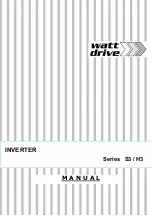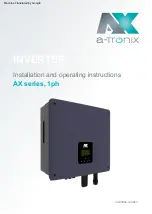
5
Siemens Building Technologies
Cerberus Division
e1148c
06.2000
3
CPU board configuration
3.1
Introduction
On the CPU board you can find four groups of dip-switches, numbered from S1 to S4.
A fifth block can be found on the expansion board if it is installed. The dip-switches re-
place the jumpers that were used on the CBS-3 for configuration purposes.
We will refer in this document to dip-switches with a double numbering convention: the
fist number refers to the block the dip-switch belongs to, the second number is the
switch position inside the block. Therefore, S1-2 means “the second dip-switch on the
first block”.
CBS-3 configuration
The CBS-3 configuration can be done in two alternative ways:
§
by dip-switches
§
by Flash EPROM
Flash EPROM configuration is required when the Cerban Splitter has to handle interac-
tions among subsystems. The Flash EPROM can be configured using a proper soft-
ware tool provided by Cerberus Dati.
CBS-3 data-link
The CBS-3 can be connected to various devices, and namely to:
§
CS11 fire detection control unit, manufactured by Cerberus
§
CS4 intrusion detection control unit, manufactured by Cerberus
§
CC60 gas detection unit, manufactured by Cerberus
What to configure
The switch S1-1 is used to discriminate between Flash EPROM configuration or dip-
switches configuration. If it is set OFF, the dip-switches are irrelevant for configuration
purposes. Otherwise, they set the CBS-3 parameters as described in the following sec-
tion.
S1-1
Function
ON
Configuration by dip-switches
OFF
Configuration by Flash EPROM
Tab. 1 Function S1-1
3.2
Configuration by dip-switches
To configure the CPU board by dip-switches, the dip-switch S1-1 has to be set ON.
When you configure the CBS-3 by dip-switches you have to:
-
set the Cerban vitality telegram option;
-
set the ciphering option, when needed.
3.2.1
Subsystem setting
Only Cerban protocol subsystems can be used in conjunction with CBS-3.
To specify the type of subsystem connected to each UART you have to use the follow-
ing two tables.
First of all define the dip-switches settings: look at Tab. 2 and identify the settings for
the subsystem type you wish to connect to CBS-3. For instance, a CS11 requires the
(OFF, OFF, ON) setting.
Then, using the Tab. 3, find out the dip-switches that are used by the UART to which
the subsystem is connected; set the three dip-switches as specified.




































